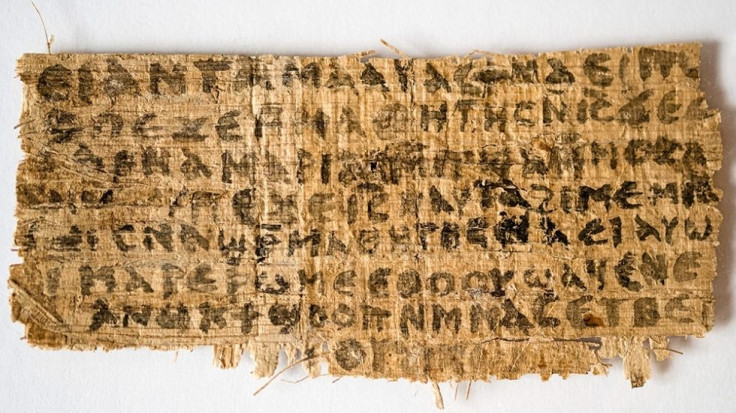New Study On Controversial Papyrus Fragment Suggests Jesus Had A Wife

The “Gospel of Jesus's Wife,” a highly controversial papyrus, suggested that some people in ancient times believed that Jesus had a wife and was married to Mary Magdalene. However, it was never considered as authentic. Now, new tests on the ink of the papyrus suggest that it might just be true.
The Gospel of Jesus's Wife is a business card-sized papyrus written in Coptic, an ancient Egyptian language. The controversy began in September 2012 when Karen King, a professor at the Harvard University claimed to have discovered a faded scrap of papyrus belonging to the fourth century, which she called The Gospel of Jesus's Wife.
The papyrus fragment contained a line that translates to “Jesus said to them, ‘My wife …’” and also refers to a “Mary,” possibly Mary Magdalene, Discovery News reported. King further said that it might be a fragment of the gospel written in the second century in Greek.
A detailed analysis of the papyrus conducted in 2014 revealed that it dates back to 1,200 years and the text might be authentic, with the ink created at around that time. However, a number of researchers in the past have claimed that the papyrus is just a modern-day forgery.
A team of researchers at the Columbia University are currently running tests on the ink used to write the papyrus. The initial results suggest that the gospel might be genuine, while some Christian denominations continue to believe that Jesus never married to anyone, and died single at 33.
“In our first exploration, we did state that the inks used for the two documents of interest [the John papyrus and the Gospel of Jesus's Wife] were quite different. The more recent results do confirm this observation strongly,” James Yardley of the Columbia University said.
© Copyright IBTimes 2025. All rights reserved.



















